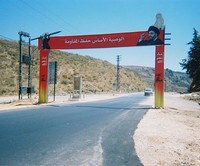As Israel contemplates military action to retard the development of Iran’s nuclear program, U.S. and Arab policymakers are trying to determine the second- and third-order effects that such a strike would have on the region. A recent exercise by U.S. Central Command has raised concerns among U.S. policymakers that an Israeli strike on Iran would do serious damage to U.S. interests in the region in particular, but analysts must remain humble about what we can really know with certainty about such contingencies. Both Iranian and Israeli intentions are unclear, and the United States and its allies have remarkably poor political intelligence on both countries. And as we Americans have learned in Iraq and Afghanistan, once the shooting starts, it is always difficult to determine how it will end. Friction and the fog of war conspire to frustrate even the most clear-eyed commanders and analysts.
Keeping in mind that spirit of humility, it is worth examining the question of how Hezbollah, assessed to be an Iranian proxy group in Lebanon, might react to an Israeli strike on Iran. The assumption that Hezbollah would respond to such a strike by attacking Israel remains a good one, but it deserves more scrutiny than it normally gets.
Hezbollah was born in the early 1980s out of three largely unrelated phenomena: the Israeli invasion of Lebanon in 1982, the Iranian Revolution of 1979 and the political mobilization of Lebanon’s Shiite community in the 1960s and 1970s. Members of Iran’s Revolutionary Guards trained the initial Hezbollah cadres in Lebanon’s Bekaa Valley, and early Hezbollah flags referred to the organization as the “Islamic Revolution in Lebanon.” By the 1990s, Hezbollah had emerged as Lebanon’s most capable militia. Re-christening itself the “Islamic Resistance,” it conducted increasingly sophisticated guerrilla attacks against Israeli units and Israel’s Lebanese allies in southern Lebanon.

